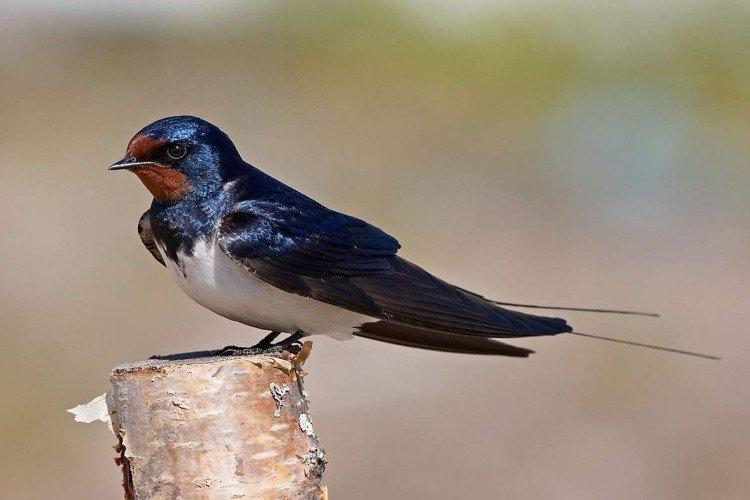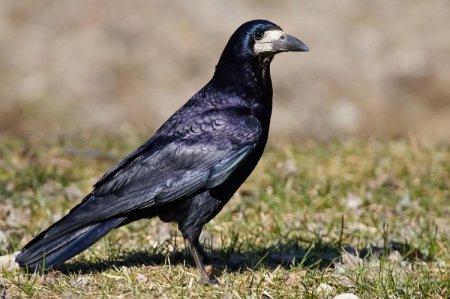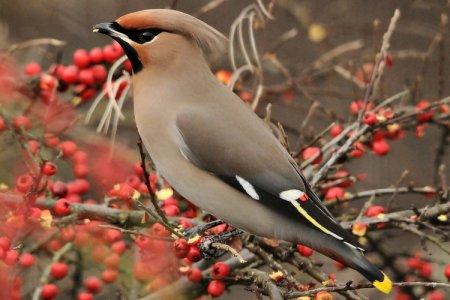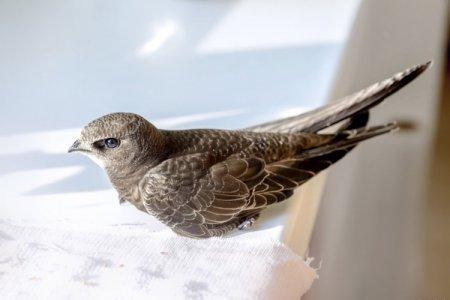
If you believe the signs, then a swallow's nest under the roof of a house is a sign of good luck and a talisman for residents. The image of a swallow is often found in fairy tales and legends, and all because it is impossible to resist such a charming bird. Let's tell you more!
general description
Swallows belong to the family of passerines, but, unlike most brethren, they spend almost their entire life in the air. This is reflected even in the name, because "lasta" literally means "to fly" from Old Slavic.
Swallow appearance
The swallow is a miniature bird with a body length of up to 22-23 cm and a weight of about 20 g. At the same time, it has impressive wings - up to 30 cm in span. Thanks to this and due to the elongated shape of the body, the swallow develops high speed, maneuvers excellently and does not get tired even during long flights.
Swallows have a large mouth, but a small beak so that it is convenient to grab small insects. She has a very thick and dense plumage, which fits snugly to the body and does not interfere with flight speed. Tenacious claws help to sit comfortably even on wires. Unlike swifts, swallows can land on the ground, but they do it infrequently.

Male and female swallows: differences
In swallows, there are almost no differences between the male and the female. Unless the tail of the females is a little shorter, and the plumage is paler - this can sometimes be caught when the birds are close.

Singing
Swallows are very social, so they communicate a lot with each other. Their twittering ends with expressive trills. They also have a good memory, so they are able to distinguish each other by their voices.

Harbingers of rain
There is another sign: if the swallows fly low, it will rain. This pattern really has a rationale. When the humidity rises, the birds are forced to go down to hunt insects. But the same phenomenon can be observed on warm evenings, especially near water bodies.

How long do swallows live?
Swallows do not have the longest life span. For example, common barn swallows in Russia live in nature for about 4 years. Maturity comes in the second season.

Swallow species
Among themselves, the species of swallows mainly differ in their place of residence. And it is easy to understand even just by their names - coastal, urban, rural or earthen.
City swallow
It differs primarily in a lighter abdomen and a shortened tail. She also lives in more northern regions, and loves to settle under the roofs of houses.

Barn swallow
It has an elongated body, a very long tail and a wide beak. Another characteristic difference is the presence of reddish spots on the forehead and throat. Barn swallows build their homes from twigs and mud.

Earthen swallow
This species is able to dig deep holes for itself in the ground, despite the fact that most of its life is traditionally spent in flight. Often, common swifts are also referred to as earthen swallows.

Shore swallow
This is a very tiny species weighing up to 15 g. It has a brown back and a gray stripe on the chest. Shore swallows settle near water bodies, especially on cliffs, where they dig out whole networks of tunnels for themselves.

Song swallow
A small swallow with a white belly and a red throat resembles a rustic one. But her chirping is significantly different.

Blue swallow
Unlike most relatives, it has a straight tail. The black plumage shimmers with blue and purple in the rays of the sun. This species is most often found in the South.

Filamentous swallow
A relatively rare species with a unique tail structure. It is short and straight, but the outermost feathers are very long and thin. They both resemble threads or mustaches, and help the swallow to maneuver.

Black and red swallow
Another southern species native to Africa with a charcoal black back and red chest. The body length barely reaches 14 cm.The wings are cast in all shades of blue and purple.

Lifestyle
Swallows spend their entire lives in constant motion and hardly rest. Their strong and well-developed wings help not get tired in flight. The speed can reach 150-160 km / h. But on the ground, the bird moves heavily and awkwardly due to weak paws.
Swallow habitat
Basically, swallows live in warm countries, but sometimes they also settle in our latitudes. In Europe and Asia, coastal and village views are especially common, but urban ones are also increasingly common. A large flock flies all day, and if it loses its members, it finds them by their voices.

Diet
The main part of the diet of swallows is made up of small flying insects, which they catch right in flight. That is why birds from regions with cold winters are forced to fly away in search of food.

Wintering
Swallows in the northern countries are migratory birds, and they fly away in the forefront. Large flocks go to Africa, Latin America and Saudi Arabia. Barn swallows also choose Indonesia.

Keeping in captivity
Due to the fact that swallows often settle near humans, questions about keeping birds in captivity periodically arise. This is especially true of the found chicks. They can really be safely fed and even accustomed to a room or aviary, where they will then return to spend the night. But keeping a swallow in a cage is not worth it.

Breeding swallows
Swallows almost never live alone, but huddle in flocks and pair up there. They belong to monogamous birds, therefore, most often they keep a pair for the rest of their lives.
In the second half of spring, swallows return from wintering, find their nests and restore them. Large colonies can settle literally close to each other. The nest resembles a closed hemisphere of saliva and clods of earth. Above there is a very small entrance, and inside there is a soft bedding.
The female lays about 5 small white eggs and the incubation process takes 2-3 weeks, depending on the weather. The male is mainly engaged in foraging. Swallow chicks are so weak that the parents are forced to help them get rid of the shell. But after 3-4 weeks they fly on their own.

Natural enemies
Terrestrial and aerial predators practically do not pose a threat to swallows, because they simply cannot keep up with them. Only some species of falcons are dangerous, they are just as fast and maneuverable.

Swallows - bird photo
To consider a swallow in flight is another task, they are so small and nimble. But in the photos you can admire the adorable bird to its fullest!




























